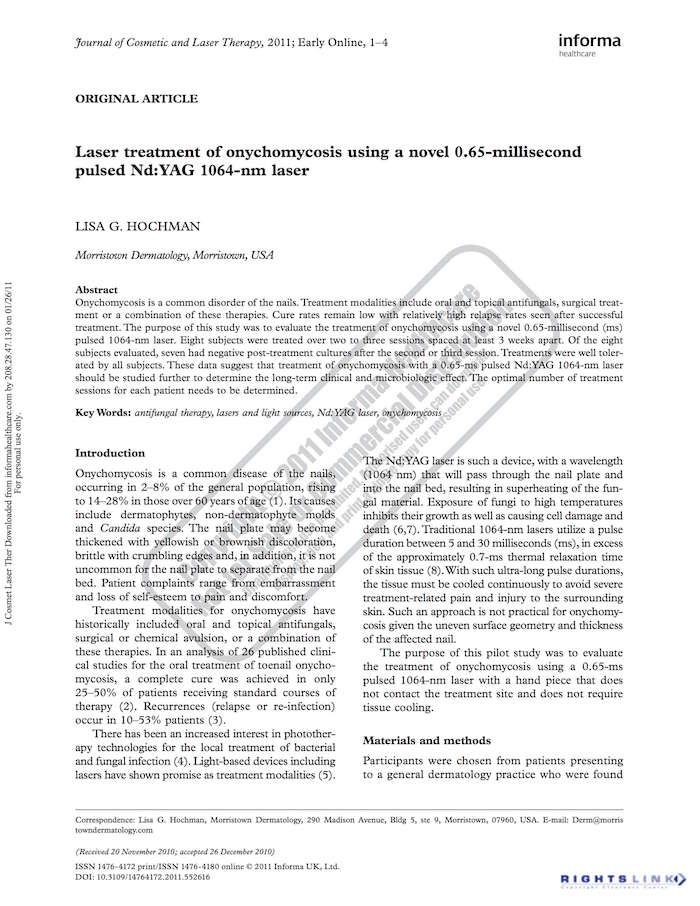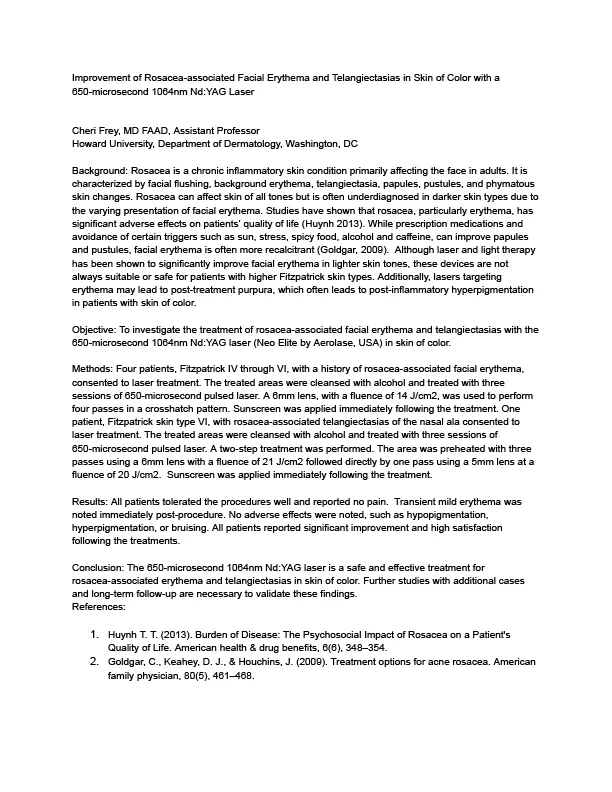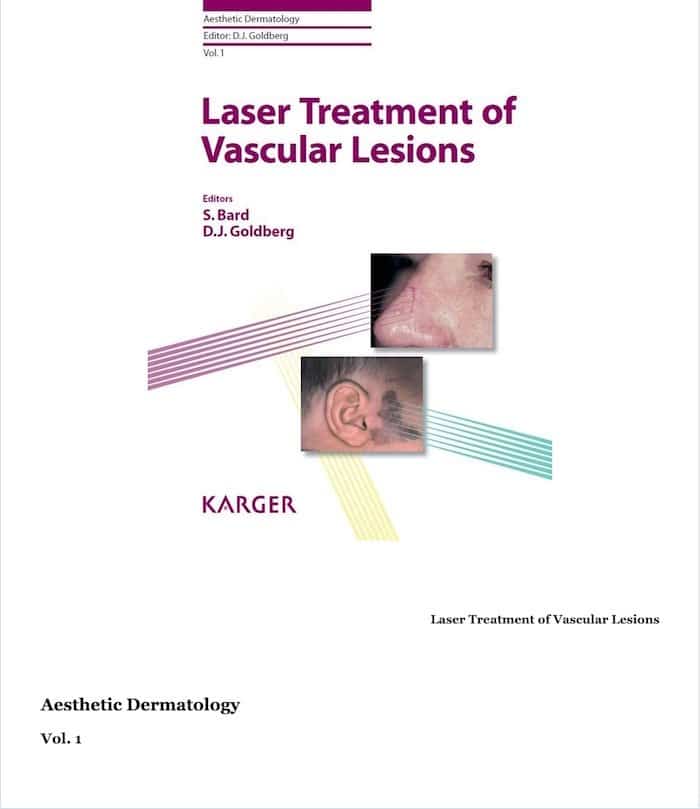Z.A. Evsyukova 1, Candidate of Medical Sciences A.V. Glushko2,3
1Federal State Budgetary Educational Institution of Higher Professional Education Moscow State University of Medicine and Dentistry, Moscow
2Federal State Autonomous Educational Institution of Higher Professional Education I.M. Sechenov First Moscow State Medical University (Sechenov University), Moscow, Russian Federation
3Institute of Plastic Surgery and Cosmetology, Moscow
Abstract
Protocol of prevention and conservative treatment of persistent edema after rhinoplasty Z.A. Evsyukova1, A.V. Glushko2,3
1A.I. Yevdokimov Moscow State University of Medicine and Dentistry, Moscow
2I.M. Sechenov First Moscow State Medical University (Sechenov University), Moscow, Russian Federation 3Institute of Plastic Surgery and Cosmetology, Moscow
Due to the high popularity and relative availability of surgical methods concerning appearance enhancement, rhinoplasty consistently occupies a leading position among all types of plastic surgery, remaining difficult to use in both technical and recovery terms. Commonly, edema after even gentle closed rhinoplasty with the use of modern surgical methods, including piezotome, persist not less than a year, provoking the fibrous tissue formation, which makes the patient and the surgeon decide on the need for repeated intervention. With the increase in the number of repeated interventions on the nasal tissues, the following question arises: how to avoid certain complications and ensure a predictable surgery result. Based on the 3-year experience of working with such patients, we have developed a protocol for the treatment of postoperative edema, which we actively use both on patients after primary rhinoplasty and after repeated surgeries. This protocol allows not only to stop edema but also to prevent fibrous changes. It helps to avoid repeated surgical interventions and increase patient satisfaction with the surgery result.
Keywords: rhinoplasty recovery, rhinoplasty, treatment of surgical complications, postoperative edema, soft-tissue edema, neodymium laser.
For citation: Evsyukova Z.A., Glushko A.V. Protocol of prevention and conservative treatment of persistent edema after rhinoplasty. RMJ. 2021;1(*):1–5.
Introduction
Rhinoplasty is one of the most popular types of plastic surgery and at the same time, it is one of the most difficult ones in terms of technical details as well as in terms of foreseeing the long-term result. On one side of things, it’s because of the peculiarities of the anatomy of the nose as the surgeon has to deal with completely different types of tissues (bone, cartilage, mucous membrane, muscles, subcutaneous adipose tissue, and the dermis itself) in terms of its physiological characteristics. On the other side of things, the difficulties come at the technical side of the surgery (the method of performing the surgery, techniques, and tools used) [1]. Following the trends of today of performing surgeries on noses, it’s better to use preservative techniques and methods choosing the correct levels of tissue dissection, minimal aggression in regards to resection of anatomical formations of the nose, and maximum preservation of natural anatomical structures [2, 3]. Although, the physiological response of the body to the trauma in form of swelling of the soft tissue is a part of the necessary effect, one that, unfortunately, can’t always be predicted, and one that can also significantly affect the end result. Understanding the process of tissue regeneration and how it heals up along with the research into the possibility of affecting it with various neurosurgical methods during the post-surgery period is extremely important and it allows you to reach a more satisfactory result.
In the traditional sense, the recovery period after the rhinoplasty lasts for 1 year. It is generally believed that during this period, all the processes of tissue regeneration and healing are completed and the nose assumes its final form. It is exactly during this period that the swelling of the soft tissue goes away along and the nose is assuming its structural form but, for some patients, the swelling of the soft tissue can remain for up to several years after the surgery. Sometimes, in such cases, patients are considering the possibility of a repeated surgery to achieve a more elegant result, but it must be kept in mind too that repeated operations on the nose are technically more complex, often requiring the use of cartilage autografts, and, at the same time, such surgeries can also be causing even more trauma due to the abundant amount of scar-altered soft tissues, which is why an improvement in the result in terms of the volume of the nose cannot be guaranteed. The most common post-surgical condition that gets in the way of normal recovery is the strong swelling at the tip of the nose. The swelling can last for up to 1.5 years and in some cases (loose chunky skin) even longer. And even if that situation doesn’t make the client worried, it concerns the surgeon who performed the rhinoplasty because the congestion of fluid in the soft tissues of the nose that’s lasting a long time leads to fibrosis and irreversible productive changes, which often indicate that an open-access secondary rhinoplasty should be performed.
Taking into consideration everything above, we are actively studying the issue of reducing and relieving the post-surgery swelling of the soft tissues of the nose with various hardware techniques to improve the final result. This article presents clinical examples of post-surgery edema that were successfully treated with the help of protocols developed by us.
Protocol for the treatment of post-surgery edema of the soft tissues of the nose
For the recovery of patients who are susceptible to edema, a treatment protocol was developed that incorporates the following methods used during the post-surgery period:
- Deep heating by a short-pulse neodymium laser (Aerolase Neo Light Pod 1064 nm), the active medium of which is an aluminum-yttrium garnet doped with neodymium, with a wavelength of 1064 nm, a pulse frequency of 650 microseconds directed on the outer layer and, if there is nasal congestion, on the nasal mucosa. The purpose of this effect is drainage of deep vessels of the dermis and hypodermis, the mucous membrane of the septum and nasal cavity, mucosal compaction due to the collagen-inducing action of a neodymium laser during tissue heating. At the same time, a short pulse duration (650 microseconds) is safe from the point of view of vascular coagulation, since it is less than the time of thermal relaxation of the vessels of the microcirculatory bed of the nose, which prevents overheating of the vessel walls and burns. The parameters used in this protocol are: pulse duration – 650 microseconds, frequency – 1.5 Hz, wavelength – 1064 nm, energy density – 15-20 J/ cm2, laser spot diameter — 5 mm. The presence of a profusely vascularized nasal mucosa with periodically bleeding capillaries is an indication for the additional use of high-density energy (160- 170 J / cm2) with a laser spot diameter of 2 mm in order to coagulate blood vessels and reduce the volume of the mucous membrane.
- Infiltration of the swollen cavity located between the lateral and/or septum cartilages and the nasal mucosa with a solution containing glucocorticosteroid (betamethasone dipropionate), the drug bovgialuronidase azoximer, and 0.9% sodium chloride solution in a ratio of 1:1:1. The use of this very solution allows for the edema to go away in a short period of time, demonstrating strong results and also, which is a really important thing as well, it does not bring destructive effects on cartilage tissue. Injections are performed strictly subcutaneously with the infiltrative technique, using a needle or a blunt-ended cannula with a diameter of 30G. For optimal diffusion of the solution in the tissues after injection, the procedure described above is performed, the heating of neodymium.
- If necessary, this procedure is repeated several times, but not earlier than after 1 month. As preventive care in home conditions, physiotherapeutic microcurrent treatment of the nose and the middle zone of the face is recommended for patients.
Arguments in favor of the protocol of postoperative edema of the soft tissues of the nose
The use of a short-pulse neodymium laser with a wavelength of 1064 nm and a low energy flux density is based on the principle of operation of low-level laser therapy (LLLT). A number of studies have demonstrated the high effectiveness of LLLT in stimulating recovery, faster relief of postoperative edema and pain [4, 5]. There are also experimental data on the greater effectiveness of the combination of LLLT and the injection of glucocorticosteroids into the center of the inflammatory area when compared to the use of these methods in monoregems [6]. The use of a neodymium laser in acute and recurrent chronic nosebleeds is an effective, safe, and painless method of vascular coagulation [7, 8]. The combined use of hyaluronidase and corticosteroid is mainly due to their synergism in the relief of swelling syndrome. Hyaluronidase causes depolymerization of glycosaminoglycans and changes in their properties. At the same time, the viscosity decreases, it becomes less viscid in relation to water, the permeability of tissue barriers increases, the movement of fluid in the intercellular space is facilitated, which leads to a decrease in tissue swelling and flattening of scars [9]. A solution of bovhyaluronidazum azoximerum and a synthetic glucocorticosteroid is used, which consists of two salts of betamethasone: sodium phosphate (it’s almost immediately absorbed from the injection spot so the effect from it comes fast) and betamethasone dipropionate (slowly absorbed from the blood pool, slowly metabolized and excreted for more than 10 days, which provides a long-lasting effect) [10]. The combination of these substances provides, on one hand, quick, and on the other hand, a very long effect of the medication (up to 1 month), and the total duration of the effect can reach 1.5 months. In order to prevent adverse events and complications from intra-focal administration of synthetic glucocorticosteroid, the concentration of the latter in solution with the drug bovhyaluronidazum azoximerum is lowered by 3 times, but due to its properties described above, the diffusion of the drug in the injection zone allows to achieve decongestant, anti-inflammatory, and antifibrotic action. We present our own clinical observations of the application of the protocol described.
Clinical observations
Clinical observation #1. Patient L., 27 years old, contacted us 3 weeks after rhinoplasty, complaining about the increasing swelling in the tip and side of the nose, the bridge of the nose, nasal congestion, and the presence of abundant mucosal secretions. Treatment was carried out according to the protocol where 3 procedures were performed with an interval of 1 month each, and additional therapy with a low-energy neodymium laser (20-30 J/ cm2) was performed every week during the 1st month of treatment in order to relieve inflammation in the nasal mucosa (Fig. 1).
Clinical observation #2. Patient D., 26 years old, 3 weeks after rhinoplasty, complained of swelling in the back, side, and tip of the nose. The treatment was carried out according to the protocol with a course of 3 procedures and an interval of 1 month (Fig. 2).
Clinical observation #3. Patient A., 23 years old. The condition is 18 months after the rhinoplasty surgery. The patient complained of persistent dense swelling of the tip of the nose. Local status: the skin around the area of the wings and the tip of the nose has enlarged pores, hyperkeratosis, it’s dense, rigid, with increased turgor. Palpation is painless. The treatment was performed according to the protocol, a course of 5 procedures with an interval of 3 months (Fig. 3).
Clinical observation #4. Patient D., 28 years old, after initial rhinoplasty that was performed 3 months ago, complained of persistent swelling in all parts of the nose. 1 procedure was performed according to the protocol (Fig. 4). In all patients, after they were treated according to the protocol, edema resolution was observed, which began 2-3 days after the procedure and has gone away completely in 1 month.
Fig. 1. Clinical observation #1. On the left — before treatment, on the right – after treatment according to the protocols.
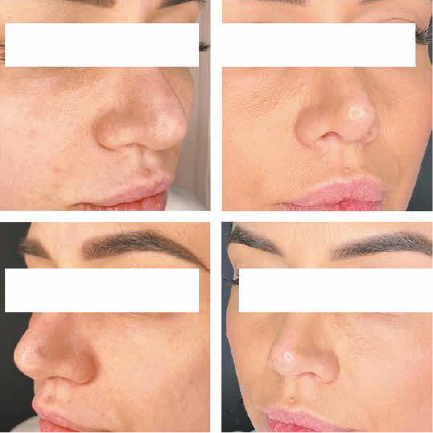
Fig. 2. Clinical observation #2. On the left — before treatment, on the right – after treatment according to the protocol.
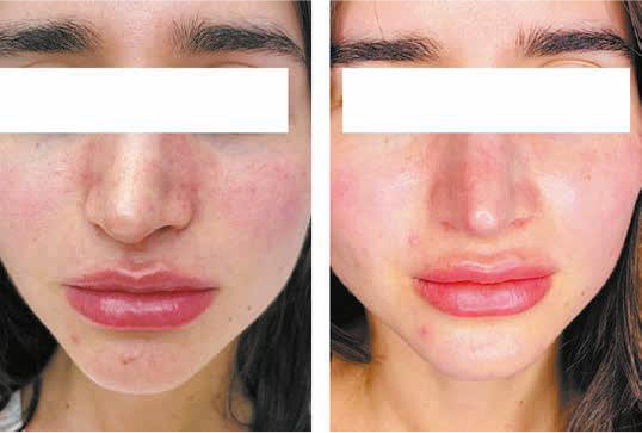
Fig. 3. Clinical observation #3. On the left — before treatment, on the right – after treatment according to the protocol
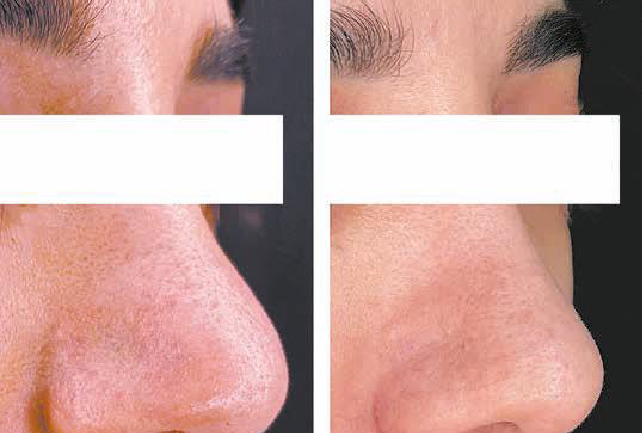
Fig. 4. Clinical observation #4. On the left — before treatment, on the right – after treatment according to the protocol
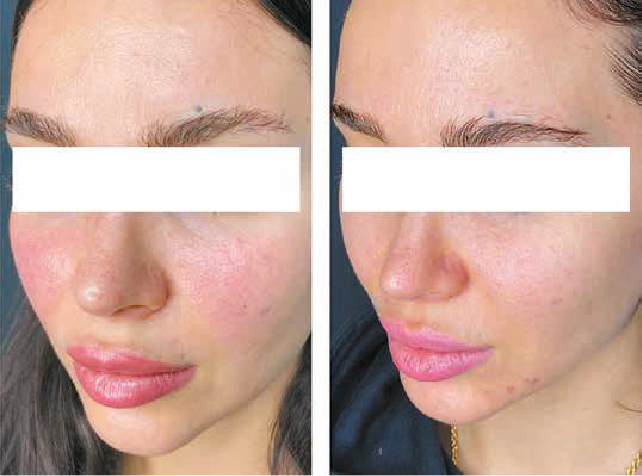
Conclusions
- Based on the results of the application of the protocols developed by us for the management of patients with edema after rhinoplasty, it can be argued that these methods are pathogenetically reasonable, relatively safe, and less traumatic, which is extremely important when working with delicate soft tissues of the operated nose.
- The use of these protocols helps not only to stop edema but also to prevent fibrous changes which, in some cases, patients can develop due to their individual characteristics, which allows to avoid repeated surgical procedures and increase patient satisfaction with the result of the operation.
- These protocols can be put to practice by dermatologists and plastic surgeons in the field of nasal surgery.
Acknowledgements
The technical edition is supported by «Medtekhnika «Dobryi Svet»» LLC.


